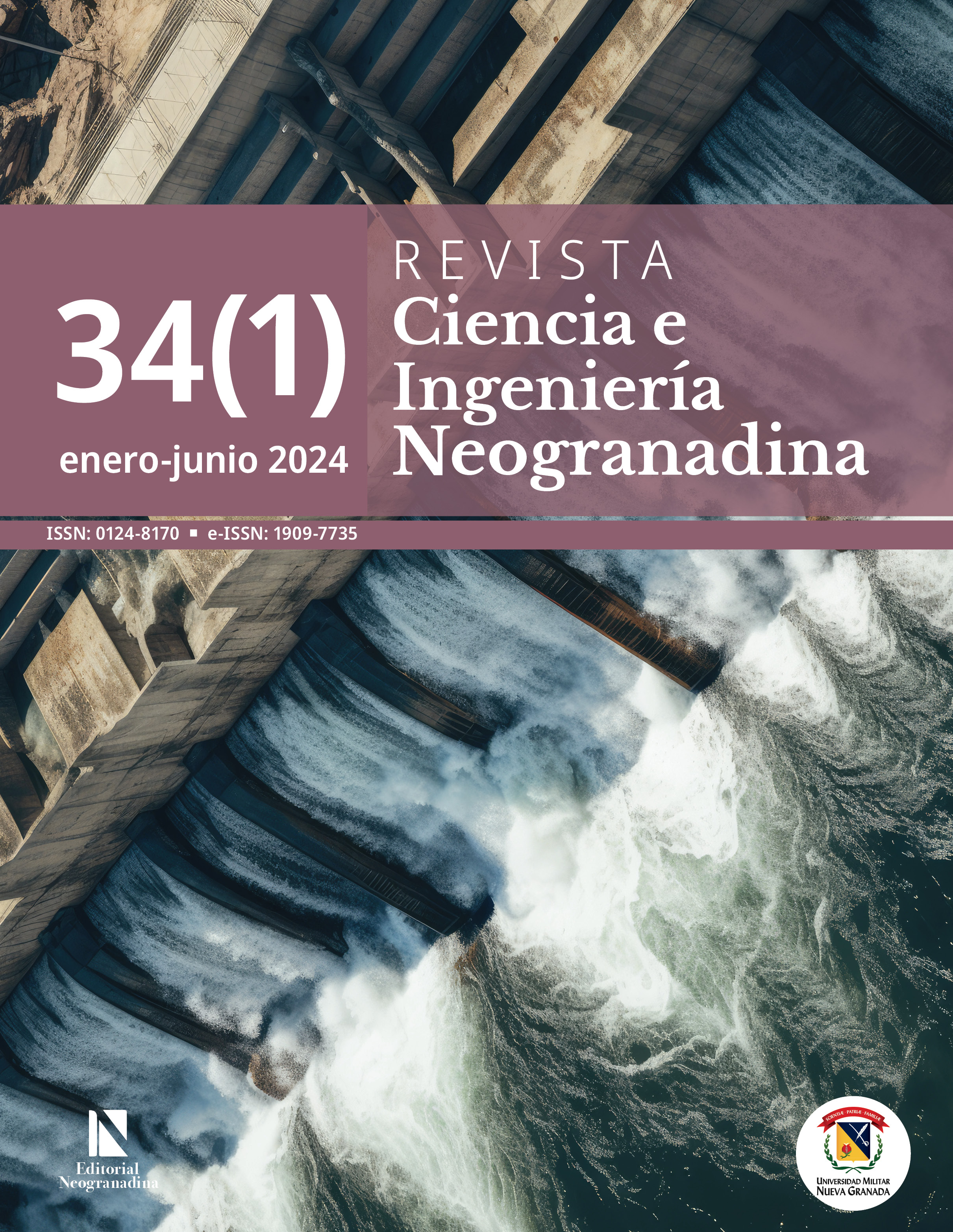Biodegradation of Low-Density Polyethylene in Soil with Fungi of the Genus Aspergillus Sp.
Abstract
Plastics constitute one of the main problems of environmental pollution due to their inadequate handling and disposal, thus generating threats and negative impacts on the environment. The objective of this work was to analyze the biodegradability of low-density polyethylene (LDPE) with fungi of the genus Aspergillus sp., in soil, for two periods of time (30 and 60 days) and two gauges (0.45 mm and 0.90 mm). The strains used were Aspergillus niger, Aspergillus fumigatus, and Aspergillus flavus, individually and combined, at a concentration of 1x107 spores/mL, inoculating in pots with 100 g of sterile soil and LDPE samples of 4 cm2 and 25 cm2, according to the experimental design. The results revealed that the highest degradation of LDPE was achieved with the gauge of 0.45 mm and a sample of 25 cm2 when the consortium of the three fungi was used, obtaining a degradation rate of 18.45 %, compared to the 4 cm2 sample, which recorded a value of 16.10 % degradation, both in 60 days. In the case of the gauge of 0.90 mm and a sample of 25 cm2, the same consortium of A. niger + A. fumigatus + A. flavus demonstrated the maximum degradation with a value of 0.34% in 60 days. Therefore, fungi of the genus Aspergillus sp. show potential for degrading plastics in soil and are a biotechnological alternative that can counteract the environmental effect produced by the inadequate management of plastic waste.
Downloads
References
S. Hari, “Revisión sobre el efecto de los hongos en la degradación del plástico”, Departamento de Bioingeniería, Escuela de Ingeniería, Instituto Vels de Ciencia, Tecnología y Estudios Avanzados (Vistas), Pallavaram, Chennai-600117, Tamilnadu, India, vol. 6, no. 1, pp. 261-265, 2018.
R. V. Moharir y S. Kumar, “Challenges associated with plastic waste disposal and allied microbial routes for its effective degradation: A comprehensive review”, Journal of Cleaner Production, no. 208, pp. 65-76,
, https://doi.org/10.1016/j.jclepro.2018.10.059.
A. T. Rivera, “Indicadores culturales para la soberanía alimentaria y su transición agroecológica: miradas, sentisaberes y pistas desde el territorio caucano”, Ixaya, Revista Universitaria de Desarrollo Social, no. 18, pp. 92-130, 2020, http://revistaixaya.cucsh.udg.mx/index.php/ixa/article/view/7610.
UNEP, Informe de la ONU sobre contaminación por plásticos advierte sobre falsas soluciones y confirma la necesidad de una acción mundial urgente, 2021.
S. K. Kale, A. G Deshmukh, M. S. Dudhare y V. B. Patil, “Microbial Degradation of Plastic - a review”, International journal of pharmaceutical research, vol. 13, no. 01, 2020. https://doi.org/10.31838/ijpr/2021.13.01.245.
G. Cedeño, K. Crooks, M. Soto, N. Terán y A. Walters, “Conciencia ambiental frente al inadecuado manejo del plástico por el ser humano”, Las Enfermeras de Hoy, vol. 1, no. 2, pp. 44-58, 2022, http://revistas.anep.org.pa/index.php/edh/article/view/35.
D. Danso, J. Chow y W. Streit, “Plastics: Environmental and Biotechnological Perspectives on Microbial Degradation”, Appl Environ Microbiol, no. 85: e0109519, 2019, https://doi.org/10.1128/AEM.01095-19.
A. Esmaeili, A. Pourbabaee, H. Alikhani, F. Shabani y E. Esmaeili, “Biodegradation of Low-Density Polyethylene (LDPE) by Mixed Culture of Lysinibacillus xylanilyticus and Aspergillus niger in Soil”, PLoS ONE, vol. 8, no. 9: e71720, 2013, https://doi.org/10.1371/journal.pone.0071720.
Y. Casas-Martínez, I. Fuquen-Fúquene y A. Gómez-Rodríguez, “Avances en biotecnología ambiental: biorremediación de plásticos”, i3+, vol. 4, no. 2,
, https://doi.org/10.24267/23462329.939.
J. Yang, Y. Yang, W. Wu, J. Zhao y L. Jiang, “Evidence of Polyethylene Biodegradation by Bacterial Strains from Guts of Plastic-Eating Waxworms”, Environmental Science & Technology, vol. 48, no. 23, pp. 13776-13784, 2014, https://pubs.acs.org/doi/10.1021/es504038a.
C. Sharon y M. Sharon, “Studies on biodegradation of Polyethylene terephthalate: a synthetic polymer”, Journal of Microbiology and Biotechnology Research, vol. 2, no. 2, pp. 248-257, 2017, https://jmbronline.com/index.php/JMBR/article/view/106
J. Yuan, J. Ma, Y. Sun, T. Zhou, Y. Zhao y F. Yu, “Microbial degradation and other environmental aspects of microplastics/plastics”, Science of the Total Environment, vol. 715, no. 136968, 2020, https://doi.org/10.1016/j.scitotenv.2020.136968.
H. Auta, C. Emenike, B. Jayanthi y S. Fauziah, “Growth kinetics and biodeterioration of polypropylene microplastics by Bacillus sp. and Rhodococcus sp. isolated from mangrove sediment”, Marine Pollution
Bulletin, no. 127 (November 2017), pp. 15-21, 2018, https://doi.org/10.1016/j.marpolbul.2017.11.036.
M. Bhatia, A. Girdhar y A. Tiwari, “Implicaciones de una nueva especie de pseudomonas en la biodegradación del polietileno de baja densidad: un enfoque in vitro a in silico”, SpringerPlus, vol. 3, no. 497, 2014, https://doi.org/10.1186/2193-1801-3-497.
Y. Chen, B. Stemple, M. Kumar y N. Wei, “Cell Surface Display Fungal Laccase as a Renewable Biocatalyst for Degradation of Persistent Micropollutants Bisphenol and Sulfamethoxazole”, Environmental Sciencie & Technology, vol. 50, no. 16, pp. 8799-8808, 2016, https://pubs.acs.org/doi/10.1021/acs.est.6b01641.
I. Quispe, K. Del Rosario y M. Vivanco, “Aislamiento y caracterización de hongos filamentosos biodegradadores de polietileno de tereftalato y polietileno de baja densidad”, Universidad Nacional, “San Luis Gon-
zaga”, ICA, 2015, https://repositorio.unica.edu.pe/bitstreams/a60ba367-850e-4f13-8fdc-1c301ceff972/download
E. Arias y L. Moisés, “Evaluación de la degradación de polietileno de baja densidad mediada por diferentes especies de hongos”, Repositorio de la Universidad San Francisco de Quito, 2018, http://repositorio.usfq.edu.ec/handle/23000/7410
H. V. Sowmya, Ramalingappa, M. Krishnappa y B. Thippeswamy, “Degradación del polietileno por Trichoderma harzianum: análisis SEM, FTIR y RMN”, Evaluación de Environ Monit, no. 186, pp. 6577-6586,
, https://doi.org/10.1007/s10661-014-3875-6
V. Norambuena, L. Luzio y E. Vera, “Comparación entre los métodos de la pipeta y bouyoucos y su relación con la retención de agua en ocho suelos de la zona altiplánica de la provincia de Parinacota, Chile”, Agricultura Técnica, vol. 62, no. 1, pp. 150-157, 2002, http://doi.org/10.4067/S0365-28072002000100015.
A. Kamara, E. Rhodes y P. Sawyerr, “Dry Combustion Carbon, Walkley-Black Carbon, and Loss on Ignition for Aggregate Size Fractions on a Toposequence”, Communications in Soil Science and Plant Analysis,
vol. 38, no. 15-16, pp. 2005-2012, 2007, https://doi.org/10.1080/00103620701548639.
A. Pérez, A. Galvis, R. Bugarín, T. Hernández, M. Vázquez y A. Rodríguez, “Capacidad de intercambio catiónico: descripción del método de la tiourea
de plata (AgTU + n)”, Revista mexicana de ciencias agrícolas, vol. 8, no. 1, pp. 171-177, 2017, https://doi.org/10.29312/remexca.v8i1.80.
M. Miyake, “Soil Testing Methods for Available Phosphorus in Paddy Soils of Indonesia”, vol. 22, no. 3, pp. 133-138, 1978, https://doi.org/10.11248/jsta1957.22.133.
M. Habte, and N. Osorio, “Arbuscular mycorrhizas: Producing and applying arbuscular mycorrhizal inoculum”, University of Hawaii eBooks, 2001, https://scholarspace.manoa.hawaii.edu/bitstream/10125/25589/1/amf_manual.pdf
A. Sosa, L. Díaz, J. Arrieta y L. Lorena, “Desplazamiento de la práctica de diluciones entre la comunidad de ingenieros bioquímicos y la escuela”, Acta
Latinoamericana de Matemática Educativa, pp. 961-970, 2014.
N. Grijalva, “Vegetal waste degradation by microbial strains inoculation”, Enfoque UTE, vol. 4, no. 1, pp. 1-13, 2013, https://doi.org/10.29019/enfoqueute.v4n1.21.
S. Ávila y H. Morán, “Estudio comparativo de la degradación de polietileno de baja densidad mediada por diferentes especies de hongos como es aspergillus & penicillium”, Universidad de Guayaquil, Guayaquil,
Ecuador, 2021.
C. Simón, “Biodegradabilidad de plásticos en agua, suelo y compost”, Ensayos, Biblioteca digital Universidad de Alcalá, no. 49, 2021.
N. Raaman, N. Rajitha, A. Jayshree y R. Jegadeesh, “Biodegradation of plastic by Aspergillus spp. isolated from polythene polluted sites around Chennai”, Journal of Academia and Industrial Research, vol. 1, no. 6,
pp. 313-316, 2012.
M. Sáenz, T. Borodulina, L. Diaz, and C. Banchon, “Minimal conditions to degrade low density polyethylene by Aspergillus terreus and niger”, Journal of Ecological Engineering, vol. 20, no. 6, pp. 44-51, 2019, https://doi.org/10.12911/22998993/108699.
G. Mathur, A. Mathur y R. Prasad, “Colonization and degradation of thermally oxidized high-density polyethylene by Aspergillus niger (ITCC No. 6052) isolated from plastic waste dumpsite”, Bioremediation Journal, vol. 15, no. 2, pp. 69-76, 2011, https://doi.org/10.1080/10889868.2011.570281.
M. Das y S. Kumar, “Microbial deterioration of low-density polyethylene by Aspergillus and Fusarium sp.”, International Journal of ChemTech Research, vol. 6, no. 1, pp. 299-305, 2014.
G. DSouza, R. Sheriff, V. Ullanat, A. Shrikrishna, A. Joshi, L. Hiremath y K. Entoori, “Fungal biodegradation of low-density polyethylene using consortium of Aspergillus species under controlled conditions”,
Heliyon, vol. 7, no. 5, e07008, 2021, https://doi.org/10.1016/j.heliyon.2021.e07008.
S. Deepika y R. Madhuri, “Biodegradation of low-density polyethylene by micro-organisms from garbage soil”, Journal of Experimental Biology and Agricultural Sciences, vol. 3, no. 1, pp. 15-21, 2015, http://www.jebas.org

Copyright (c) 2024 Ciencia e Ingenieria Neogranadina

This work is licensed under a Creative Commons Attribution-NonCommercial-NoDerivatives 4.0 International License.











